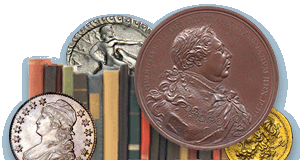
PREV ARTICLE
NEXT ARTICLE
FULL ISSUE
PREV FULL ISSUE
STACKS BOWERS: KING ERIK EMUNE PENNYStack's Bowers Senior Numismatist Henrik Berndt published this article about a penny from Danish King Erik Emune (1134-1137) in the firm's World Coin of The Week column. It will be sold as part of the L. E. Bruun Collectors Choice Online Auction, September 22-23. -Garrett Some coinages seem to hint at special occasions, at a specific event that we may or may not recognize. One such item is a Penny from King Erik Emune (1134-1137), which Stack's Bowers Galleries is offering as lot 17035 in the L. E. Bruun Collectors Choice Online Auction, September 22-23, 2025. It may quite possibly have been struck to commemorate the Battle of Fotevik (Fodevig) in Scania in 1134. In the battle, Erik Emune defeated the armies of King Niels and his son Magnus with the help of 300 German mercenary knights. Magnus died in the battle as did five bishops on Niels' side; Niels himself fled to the city of Schleswig where he was soon murdered by the inhabitants. Erik Emune won the Danish throne, even if he held it for only four years. The coin in question, struck by King Erik, depicts on the reverse a rider wearing a crown, galloping right with his sword drawn and a cross before his face. It is an enticing thought that it might commemorate his victory at Fodevig. As a coin type, the rider is quite unique for Denmark and breaks tradition in not depicting a cross or another Christian symbol as the central element. This fits the Battle of Fodevig, where the use of cavalry also broke tradition and is regarded as the first Danish battle in which cavalry was used. The divine is still present on the coin, though, with the cross in the sky before the king, much like Constantine the Great's in hoc signo vinces dream which led to the Christianization of the Roman Empire in the fourth century AD. This story would have been well-known to the Danish clergy (those of them not killed in the battle) and quite possibly the royalty, too. The coin type is notoriously frail and brittle with most examples chipped to some degree. The present example, however, is graded NGC AU-58 and is in excellent condition. The obverse is slightly double struck which somewhat obscures the legend, but ‘ERIC REX' can still be read. The reverse with the rider is sharp and distinct. Both sides do have a few spots of old rust but display delightful toning from more than 100 years of good storage. Adding to the story is the fact that this coin was part of the Haraldsborg Hoard, discovered 1854 in the old Danish capital of Roskilde on the site of Haraldsborg Castle. The castle, which at that time would have been no more than a fortification with palisades, was built by Harald Kesja, the half-brother of Erik Emune and would-be contender to the Danish throne. The hoard consisted of bronze and silver liturgical items as well as 600 coins from the reign of Erik Emune. Incidentally, Emune means ‘forever remembered' and that he surely is, by numismatists at least, for such a handsome and intriguing coinage as this.
To read the complete article, see:
To read the complete item description, see:
Wayne Homren, Editor The Numismatic Bibliomania Society is a non-profit organization promoting numismatic literature. See our web site at coinbooks.org. To submit items for publication in The E-Sylum, write to the Editor at this address: whomren@gmail.com To subscribe go to: Subscribe All Rights Reserved. NBS Home Page Contact the NBS webmaster 
|

